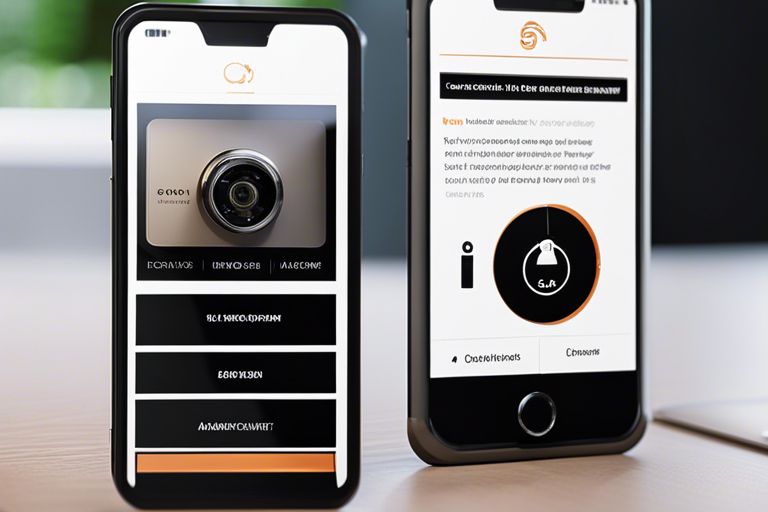The frequency and severity of cyber-attacks and data breaches are escalating alarmingly in our increasingly interconnected world. No one is immune to the risks posed by cybercriminals, from individuals to multinational corporations. As the stakes grow higher, the need for robust security measures becomes not just advisable but essential. One such indispensable security measure is Two-Factor Authentication (2FA). This comprehensive guide aims to delve into the intricacies of 2FA, exploring its mechanics, profound impact on cybersecurity, and benefits. Whether you’re an individual concerned about safeguarding personal data or a business tasked with protecting sensitive information, this guide will serve as a valuable resource.
The Current State of Cybersecurity
The Alarming Statistics
According to Cybersecurity Ventures, the annual cost of cybercrime is expected to reach a staggering $6 trillion by 2021. This figure encompasses not just the direct financial losses from cyber-attacks but also the associated costs, such as system downtimes, legal fees, and reputational damage.
High-Profile Breaches
The Equifax data breach in 2017 served as a wake-up call for many. Personal information, including Social Security numbers of 147 million Americans, was exposed. Another glaring example is the Yahoo data breach, affecting around 3 billion accounts. These incidents highlight the vulnerabilities of relying solely on passwords for security.
The Inadequacy of Password-only Security
Passwords, while a rudimentary form of security, are fraught with limitations:
- Easily Cracked: Many people still use efficiently guessable passwords like “123456” or “password.”
- Phishing Vulnerability: Cybercriminals often use phishing emails to trick people into revealing their passwords.
- Human Error: The complexity of managing multiple passwords often leads people to write them down or use the same password across multiple platforms, making them easy targets for theft.
What is Two-Factor Authentication?
Defining 2FA
Two-factor authentication (2FA) is a security process wherein a user provides two distinct forms of identification to verify their identity. This is a significant upgrade over single-factor authentication, which typically involves just a password.
Types of 2FA
- Something You Know: This could be a password, a PIN, or answers to “secret questions.” While this is the most common form of authentication, it is also the most vulnerable to attacks.
- Something You Have: This usually involves a physical device like a smartphone or a smart card that generates or receives a time-sensitive code. This form of 2FA is generally more secure as it requires the attacker to have physical access to a device.
- Something You Are: This involves biometrics, such as fingerprints, retina scans, or voice recognition. While highly secure, this method is often more expensive and raises privacy concerns.
The Evolution from Single-Factor to Two-Factor Authentication
Single-factor authentication relies solely on something you know, usually a password. However, as cyber threats have evolved, the need for additional layers of security has become evident. Two-factor authentication addresses this by adding a second layer, making it exponentially more difficult for unauthorized users to gain access.
How Does Two-Factor Authentication Work?
The Setup Process
Setting up 2FA is generally a straightforward process. For most online services, you’ll find an option to enable 2FA in the security settings. Once enabled, you’ll be prompted to choose a second factor for authentication, such as receiving a text message or using an authenticator app.
Typical Use-Cases
- Logging In: When you attempt to log into an account with 2FA enabled, you’ll first enter your password. Then, you’ll be prompted to provide the second factor, such as a code sent to your phone via SMS or generated by an authenticator app.
- Confirming Transactions: In online banking or e-commerce settings, 2FA can provide an additional layer of security before confirming a transaction. This is particularly useful for high-value transactions.
Popular 2FA Methods
- SMS Verification: A text message with a unique, time-sensitive verification code is sent to your mobile phone.
- Authenticator Apps: Applications like Google Authenticator or Microsoft Authenticator generate time-sensitive codes you must enter alongside your password.
- Biometrics: Fingerprint scans, facial recognition, or even retina scans can serve as your second form of authentication.
Benefits of Using Two-Factor Authentication
A Fortress of Security
The primary benefit of 2FA is the enhanced security it offers. By requiring a second form of identification, 2FA makes it exponentially more challenging for attackers to gain unauthorized access to your accounts. Even if they crack your password, they would still need to bypass the second layer, which is often impossible without physical access to a specific device or biometric data.
A Shield Against Phishing
Phishing attacks often aim to trick individuals into revealing their passwords. With 2FA, even if someone falls for a phishing scam, the attacker would still need the second verification factor, making the attack less likely to succeed.
Building Customer Trust
For businesses, implementing 2FA can significantly enhance customer trust. Customers who know that you’re taking extra steps to protect their data are more likely to engage with your services. This is particularly important in industries that handle sensitive information, such as finance and healthcare.
Common Misconceptions About Two-Factor Authentication
The Illusion of Inconvenience
One of the most common reasons people avoid using 2FA is the perception that it’s inconvenient. While it’s true that 2FA requires an extra step during the login process, the additional time spent is negligible compared to the security benefits it offers.
Not Just for Tech Gurus
Another misconception is that 2FA is only for tech-savvy individuals. Most online platforms have made it incredibly straightforward to set up 2FA, often providing step-by-step instructions and customer support to assist users.
Privacy: A Non-Issue
Some individuals express concerns that 2FA could be used to track their activities. However, the primary purpose of 2FA is to enhance security, not to monitor user behaviour. Most 2FA methods do not collect additional personal information beyond what is needed to verify your identity.
How to Implement Two-Factor Authentication
For Individuals
Enabling 2FA is usually as simple as visiting the security settings of your online accounts. Platforms like Google, Facebook, and most online banking services offer easy-to-follow guides to set up 2FA.
For Businesses
For companies looking to implement 2FA, the process is a bit more complex but equally crucial. Businesses often need to integrate 2FA software into their existing systems, which may require the expertise of IT professionals. However, the investment is well worth it, given the enhanced security and customer trust that 2FA brings.
Future Trends in Two-Factor Authentication
The Rise of Biometrics
Biometric methods like fingerprint and facial recognition are becoming increasingly popular as a form of 2FA. These methods offer a high level of security and are often more convenient than entering a code.
Passwordless Authentication
There’s a growing trend towards eliminating passwords and relying solely on other authentication methods. This could involve using a physical security key or biometric data as your primary and secondary forms of identification.
Blockchain and 2FA
Blockchain technology offers exciting possibilities for secure, decentralized authentication methods. While still in the experimental stage, blockchain could revolutionize how we think about online security.
Conclusion
The importance of robust cybersecurity measures cannot be overstated in our increasingly digital world. Two-factor authentication is a formidable line of defence against various cyber threats. From enhancing security to building customer trust, the benefits of 2FA are manifold. While some may shy away from it due to misconceptions about its complexity or concerns about privacy, the reality is that 2FA offers a straightforward and effective way to protect your digital life. If you haven’t already implemented Two-Factor Authentication, now is the time to take that crucial step.
Additional Resources
- Google Authenticator
- Microsoft Authenticator
- “The Art of Invisibility” by Kevin Mitnick






